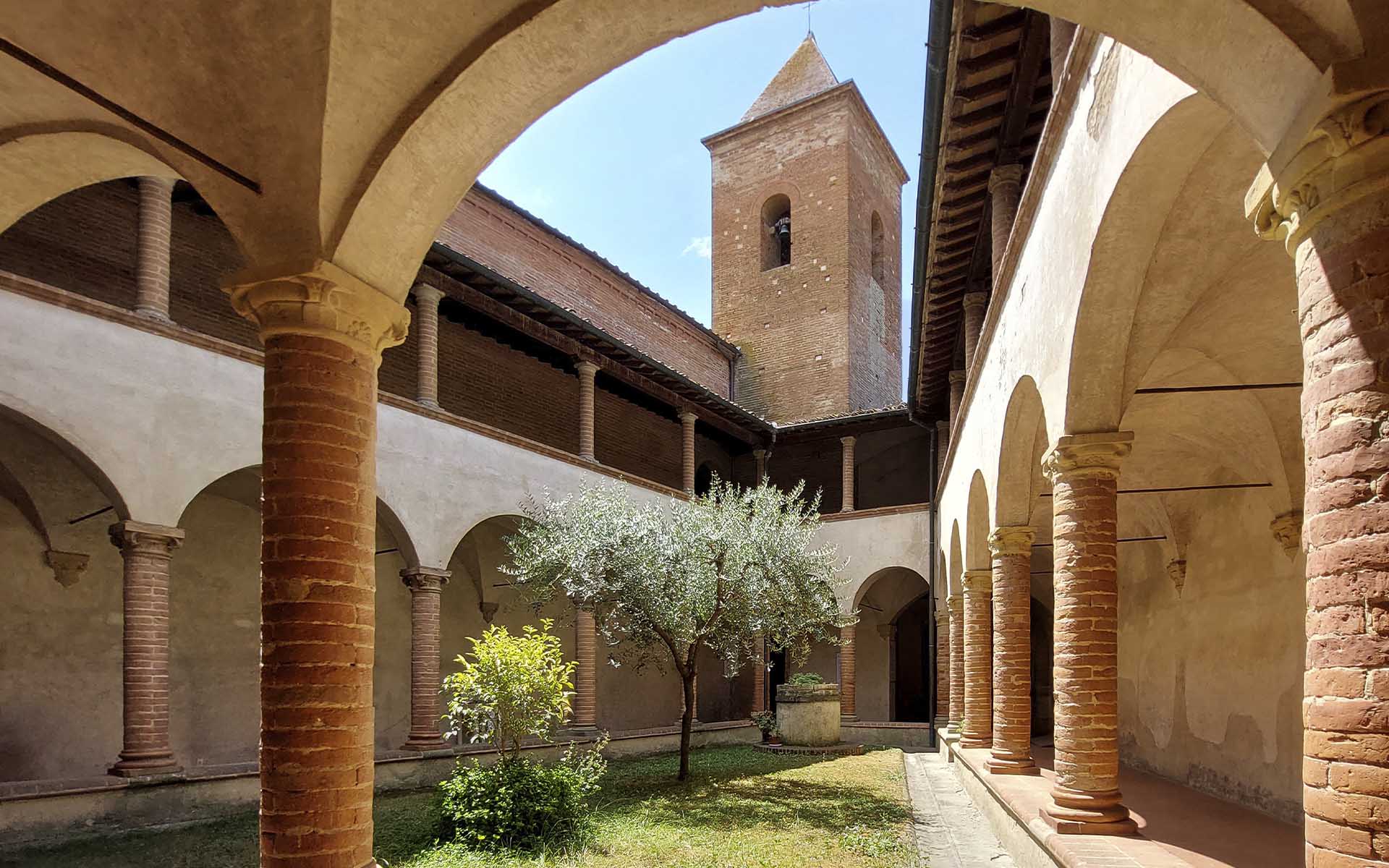Convent of the Augustinians
Blessed Giulia
Blessed Giulia from Certaldo, born in 1319, lived as an Augustinian Tertiary in prayer and solitude for thirty years. She died in 1367, and her cult quickly spread, supported by Boccaccio and Agnolo di Pierozzo Giandonati. Declared blessed by Pius VII in 1819, she is still venerated today as the patroness of Certaldo, with relics and artworks displayed in the Museum of the Convent of the Augustinians.
Some images below have been generated with the aid of artificial intelligence.

1319-1337
1319-1337
The Origins
Youth
In the absence of documented news, over time the life of Blessed Giulia has been drawn from popular memories that indicate her as the daughter of messere Pace Della Rena, a family originating from Semifonte, emigrated to Certaldo after the destruction of the rebellious city in 1202, where she was born in 1319.Having moved as a young girl to the Santo Spirito neighborhood in Florence, it is unclear whether due to her parents' death or economic problems, she entered the service of the Tinolfi family, and developed a strong spiritual bond with the Convent of Santo Spirito.
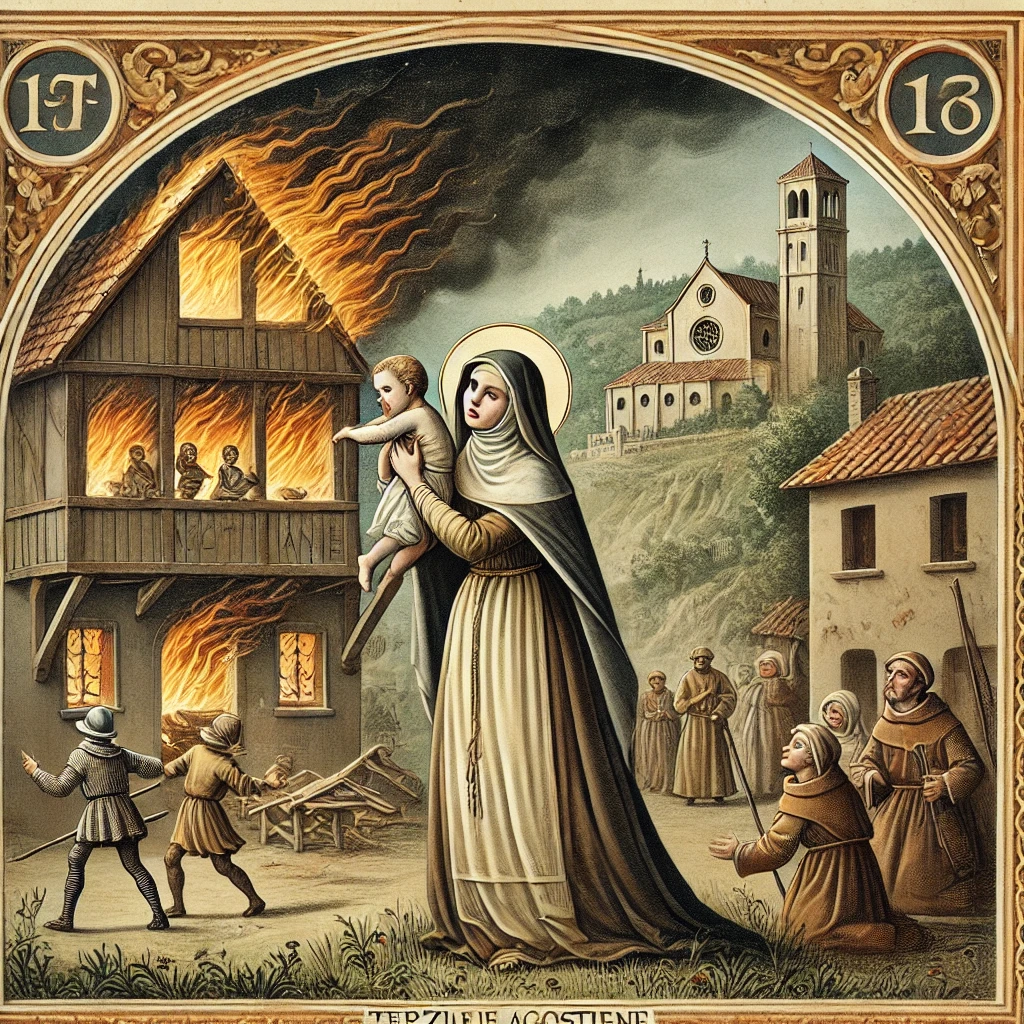
FIRST MIRACLE
FIRST MIRACLE
Certaldo and the First Miracle
Religious Life
In 1337, she joined the Augustinian Tertiaries, known as Mantellate, as attested by her most authentic image painted on the lost altarpiece commissioned in 1372, a few years after her death, for the altar dedicated to her.Back in Certaldo, Giulia performed her first miracle, saving a child from a burning house.
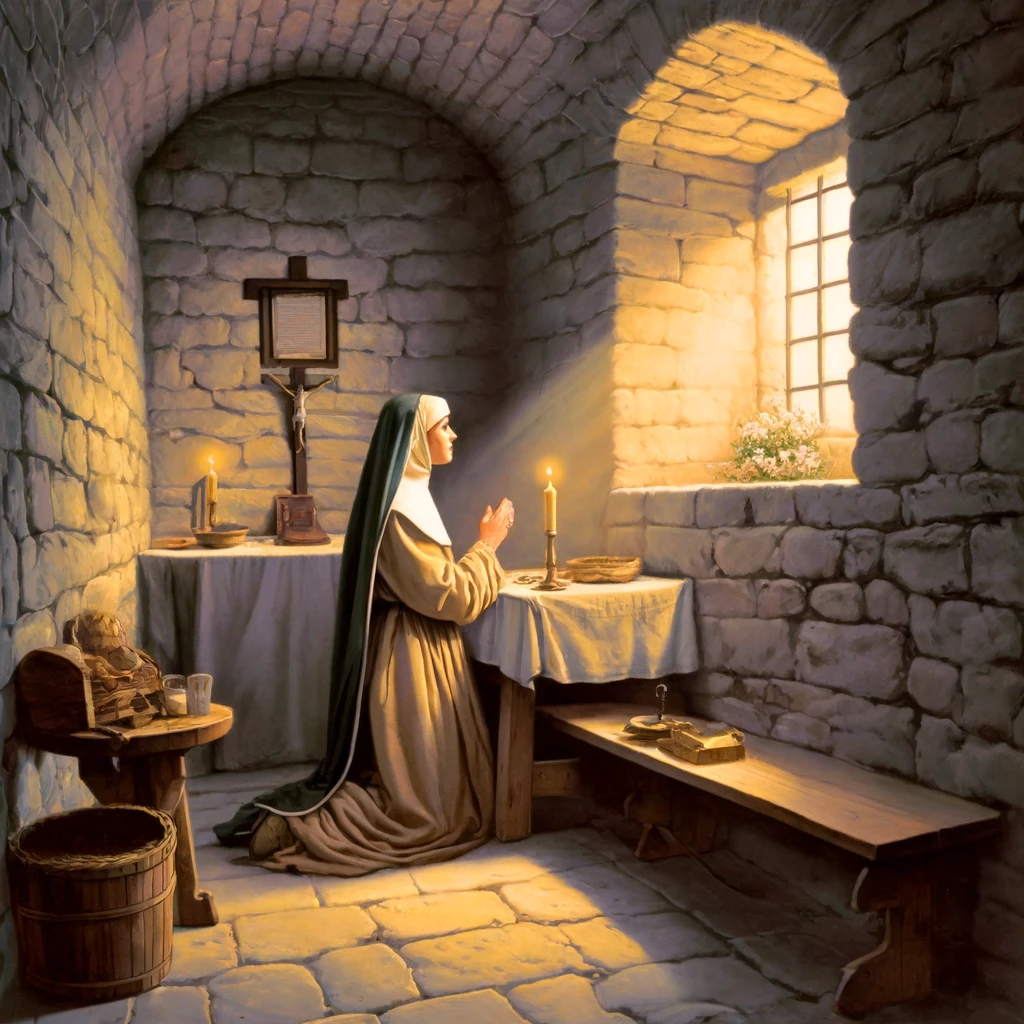
IN CELL
IN CELL
The Hermitesses
Hermit Life
Following the example of the hermit women of Valdelsa, such as Verdiana from Castelfiorentino and Fina from San Gimignano, she withdrew from worldly life to retreat in a cell of the Augustinian convent, adjoining the sacristy.In the cell, two small windows were opened, one overlooking the church to attend sacred functions, and the other, according to popular tradition, used to receive food, which the hermitess rewarded with fresh flowers.
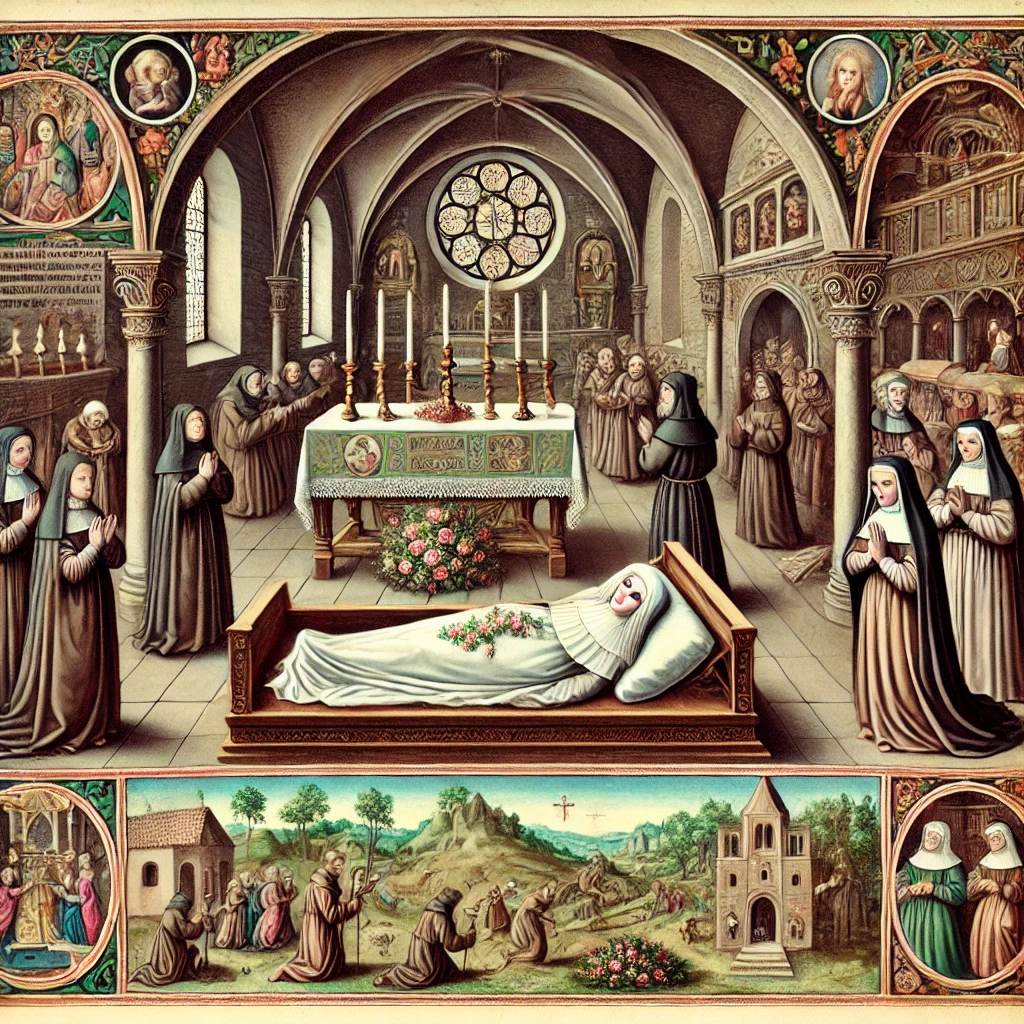
DEATH AND DEVOTION
DEATH AND DEVOTION
The Cult of the Hermitess
Death
Secluded in this cell, Giulia lived in solitude and prayer for thirty years, never leaving the convent. Upon her death on January 9, 1367, she was buried wrapped in her Augustinian Tertiary habit.The veneration of the hermitess was immediate, fervently promoted by Giovanni Boccaccio and Agnolo di Pierozzo Giandonati, the patrons who commissioned the erection of the altar in the church in 1372, where her remains and the altarpiece were placed.
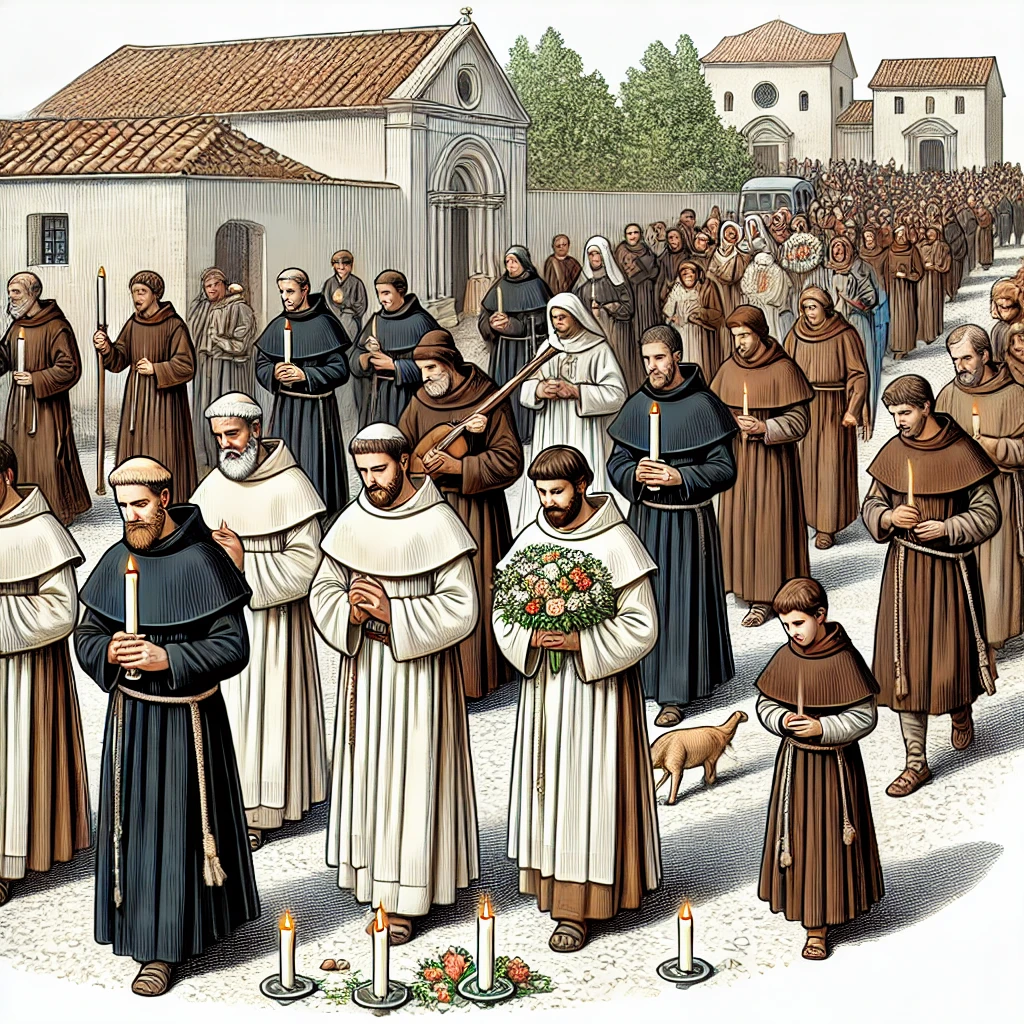
POPULAR CULT
POPULAR CULT
Popular and Canonical
Devotion and Codification
A vivid devotion maintained for centuries by the Augustinians, faithful custodians of the body of their tertius, and promoters of the institution of the feast in her honor around 1438, an event moved in 1674 from January 9 to the first Sunday of September.In 1672, Andrea Arrighi, known as Capranica, was entrusted with codifying the cult of Blessed Giulia. Elected patroness of Certaldo, she was beatified by Pius VII on June 18, 1819.
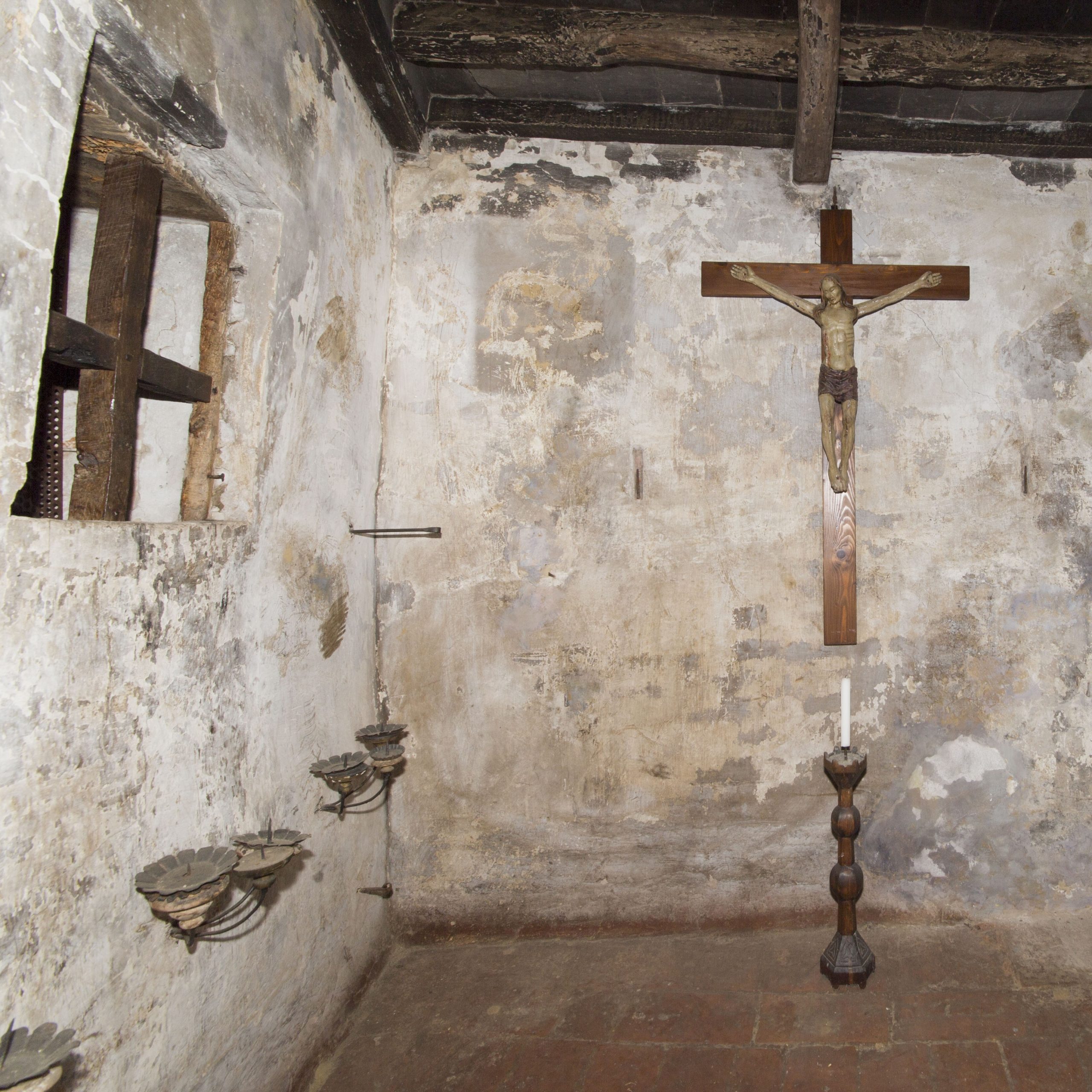
CELL AND RELICS
CELL AND RELICS
Place of Worship
From Chapel to Cell
In 1850, a chapel dedicated to Blessed Giulia was erected in the cloister, later destroyed during restorations begun in 1963 to restore the original forms of the open space of the convent.After the chapel was lost, the ancient cell was restored for worship, where relics and ex-votos were transferred. The embroidered brocade habit with silver threads was replaced in 2009 to respect the vows of poverty of the order.
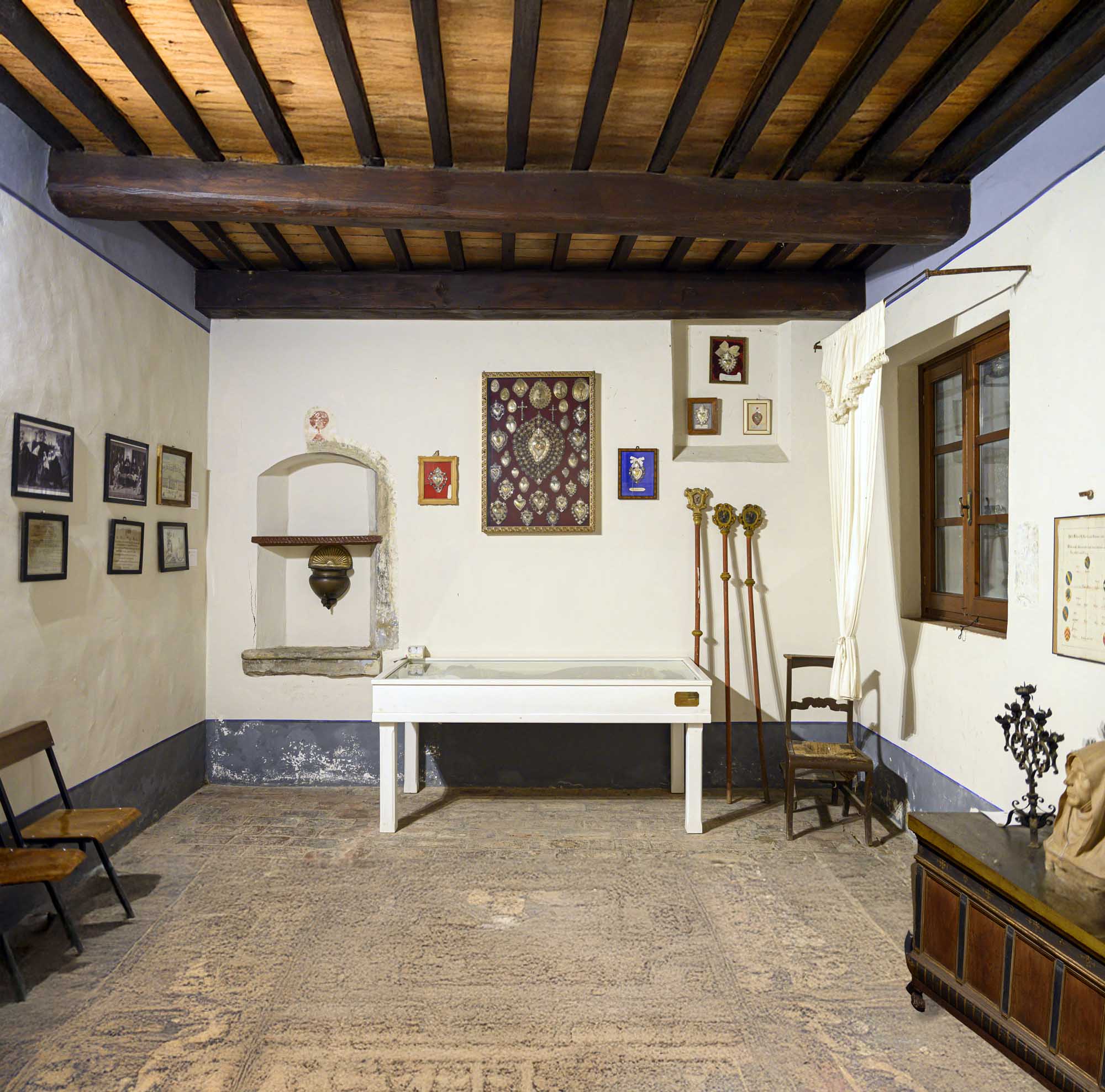
TODAY
TODAY
Her Legacy



